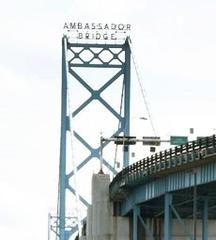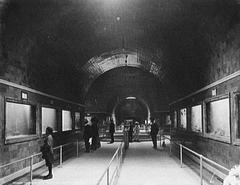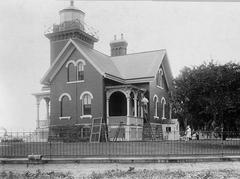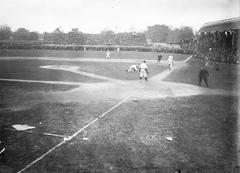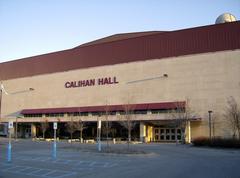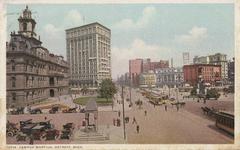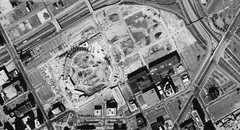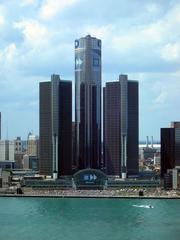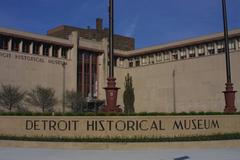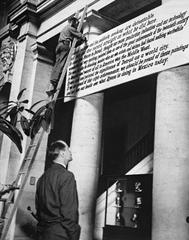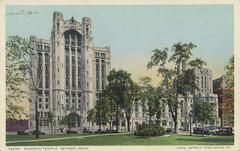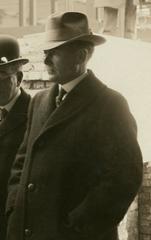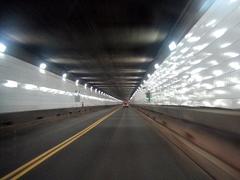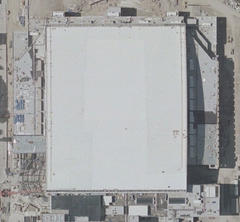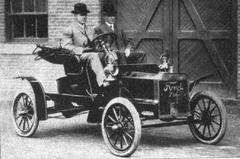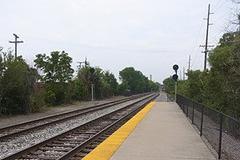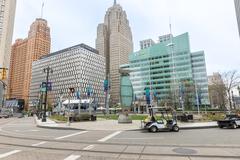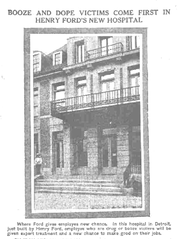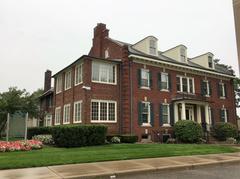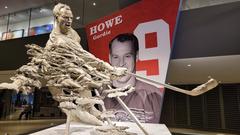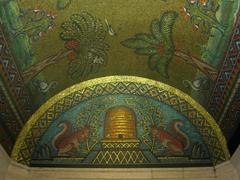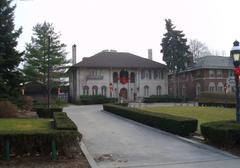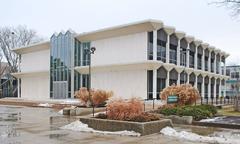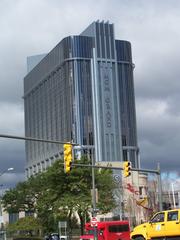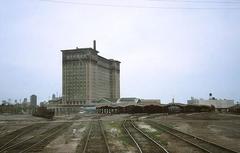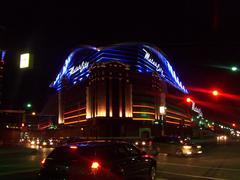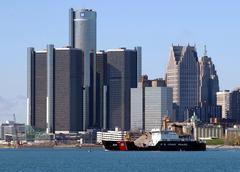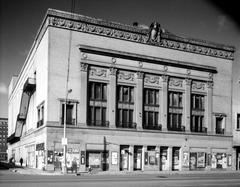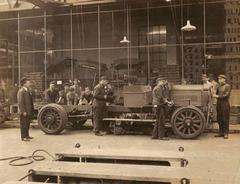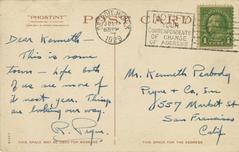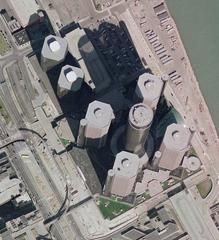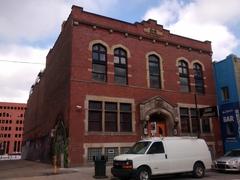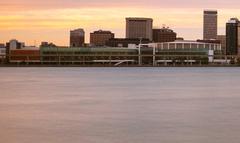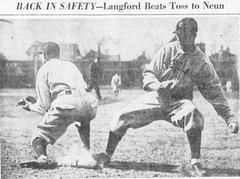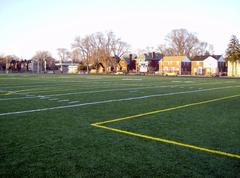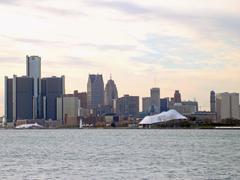
Dry Dock Complex Detroit Visiting Hours, Tickets, and Historical Sites Guide
Date: 04/07/2025
Introduction
The Dry Dock Complex in Detroit, Michigan, stands as a monumental landmark of the city’s maritime and industrial heritage. Situated along the Detroit River, the complex offers a unique window into Detroit’s pivotal role in 19th- and early 20th-century shipbuilding and commerce on the Great Lakes. Founded by Captain Stephen R. Kirby and his son Frank Kirby, whose engineering innovations left a lasting imprint on American shipbuilding, the complex grew into an industrial powerhouse—integrating shipbuilding, marine engine manufacturing, and groundbreaking architectural design. Today, preserved as a National Register of Historic Places site, the Dry Dock Complex is both a cultural destination and an educational resource, drawing visitors interested in history, architecture, and Detroit’s enduring legacy. (source) (source) (source)
Table of Contents
- Introduction
- Early Shipbuilding Roots and Industrial Growth
- Formation and Growth of the Dry Dock Complex
- Architectural and Engineering Innovations
- Expansion: The Detroit Shipbuilding Company
- Dry Dock No. 2: An Engineering Marvel
- World War I and Peak Production
- Decline, Closure, and Preservation
- Visiting Information: Hours, Tickets, Accessibility
- Nearby Attractions and Amenities
- Frequently Asked Questions (FAQ)
- Conclusion and Visitor Tips
- References
Early Shipbuilding Roots and Industrial Growth
Detroit’s rise as a shipbuilding hub began in the 19th century, shaped by entrepreneurs like Captain Stephen R. Kirby. Initially starting in Cleveland and later relocating operations to Saginaw and Wyandotte, the Kirby family cemented Detroit’s position in maritime commerce by acquiring a shipyard in Wyandotte in 1872. Frank Kirby, Stephen’s son and a talented engineer, joined as lead designer, later creating National Historic Landmark vessels such as the Columbia and the Ste. Claire (source).
Formation and Growth of the Dry Dock Complex
The Dry Dock Engine Works was founded in 1867, specializing in marine engines on Atwater Street. Over the following decades, the company expanded with modern facilities—including machine, forge, and boiler shops—while maintaining a close partnership with the Detroit Dry Dock Company, which began shipbuilding in the area in 1852. By the 1890s, Dry Dock Engine Works supplied a majority of engines to Detroit Dry Dock, leading to eventual consolidation (source).
Architectural and Engineering Innovations
The Dry Dock Complex stands out for its early adoption of steel-frame construction. The 1892 machine shop, designed by the Berlin Iron Bridge Company, is one of Detroit’s first industrial buildings with a full steel skeleton. This innovation enabled vast open interiors for large-scale manufacturing, with brick curtain walls for insulation and durability. Large windows maximized daylight before widespread electric lighting, making this structure a model for industrial architecture (source).
Expansion: The Detroit Shipbuilding Company
In 1899, the American Shipbuilding Company merged Dry Dock Engine Works, Detroit Dry Dock Company, and Detroit Sheet Metal and Brass Works, forming the Detroit Shipbuilding Company. This merger unified the site as a major industrial complex, facilitating the construction and repair of Great Lakes vessels (source).
Dry Dock No. 2: An Engineering Marvel
Constructed in 1892, Dry Dock No. 2 was engineered to accommodate the largest Great Lakes ships—even fully loaded. Measuring 378 feet long and up to 91 feet wide, it could be flooded in 20 minutes and emptied in 90, supported by over 2,000 piles. A commemorative monument with a sculpture of the dry dock and the steamer Pioneer marks its significance (source).
World War I and Peak Production
The early 20th century marked the complex’s peak, with new facilities and increased shipbuilding during World War I. By the 1910s, multiple new buildings completed the industrial block, supporting wartime production and Detroit’s economic growth (source).
Decline, Closure, and Preservation
After World War I, demand plummeted, and the shipyards struggled to adapt to new engine technologies. The Wyandotte yard closed in 1920; Detroit yards followed in 1924, with the company dissolving in 1929 (source). Recognizing its significance, the site was listed on the National Register of Historic Places in 2009 (source), and the Michigan Department of Natural Resources led redevelopment efforts, preserving key structures as part of Detroit’s riverfront revitalization (source).
Visiting Information: Hours, Tickets, Accessibility
Outdoor Adventure Center (OAC):
Housed within the historic Globe Building (part of the original Dry Dock Complex), the OAC brings Detroit’s industrial past alive with interactive exhibits and programs.
- Hours: Tuesday to Sunday, 10:00 AM – 5:00 PM; closed Mondays and major holidays. Confirm seasonal hours on the official website.
- Tickets: $10 for adults, $7 for seniors and youth (ages 3–17), free for children under 3. Discounts and free admission days available. Purchase tickets online or at the entrance.
- Accessibility: The site is fully accessible, with ramps, elevators, and accessible restrooms.
- Getting There: 1801 Atwater St, Detroit, MI 48207. Accessible by car, public transit, and bike; on-site parking available.
- Tours: Guided tours and educational programs are available by appointment. Group rates and memberships are offered (source).
Nearby Attractions and Amenities
- Detroit RiverWalk: Scenic trail with gardens and public art (source).
- William G. Milliken State Park and Harbor: Michigan’s first urban state park, ideal for picnics and relaxation.
- Dequindre Cut Greenway: Urban biking and walking trail.
- Eastern Market: Historic food and shopping district (source).
- Dining: Numerous waterfront restaurants and cafes are within walking distance.
- Restrooms: Facilities available at OAC and nearby attractions.
Frequently Asked Questions (FAQ)
Are tickets required for the Dry Dock Complex?
Tickets are required for entry to the Outdoor Adventure Center and for guided tours at the Dry Dock Complex. Some events are free or offer discounted admission. Advance booking is recommended.
What are the visiting hours?
OAC is open Tuesday–Sunday, 10 AM–5 PM. Specific hours for special events or tours at the Dry Dock Complex may vary; check official sources for updates.
Is the complex wheelchair accessible?
The OAC is fully accessible. Some outdoor areas of the historic complex may have limited accessibility due to industrial infrastructure—contact organizers in advance for details.
Are guided tours available?
Yes, guided tours and educational programs are offered. Check the OAC and Detroit Historical Society websites for schedules and registration.
Is the site suitable for children?
Yes, the OAC and many tours offer family-friendly educational experiences, but certain tours may have age restrictions for safety.
Conclusion and Visitor Tips
The Dry Dock Complex Detroit offers an unparalleled journey through Detroit’s industrial and maritime history. From the innovative steel-framed machine shop and monumental Dry Dock No. 2 to the adaptive reuse of the site as the Outdoor Adventure Center, the complex blends historical preservation with modern public engagement. Its location along the Detroit Riverfront provides access to complementary attractions, making it a must-visit for families, history buffs, and travelers.
Visitor Tips:
- Book tours and purchase tickets in advance.
- Wear comfortable, weather-appropriate clothing and sturdy shoes.
- Allow extra time to explore nearby RiverWalk and attractions.
- Check the OAC or Visit Detroit websites for current schedules and special events (source).
- Download the Audiala app for guided tours and updates.
For more information, event schedules, and ticketing, visit the official Outdoor Adventure Center website.
References
- Dry Dock Complex Detroit: Visiting Hours, Tickets, and Maritime Heritage, MDTUJN Blog
- Dry Dock Complex Detroit, National Register of Historic Places
- Michigan Department of Natural Resources Outdoor Adventure Center History
- EPA Brownfields Redevelopment Detroit
- Visit Detroit Official Site
- Awesome Mitten: Michigan DNR Outdoor Adventure Center
- Secret Detroit: Things to Do
- Nomadic Matt: Things to See and Do in Detroit

















